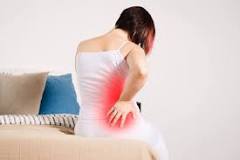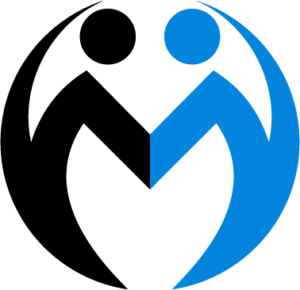Many people suffer from low back pain. A strain or injury to the back’s muscles or tendons can cause it. Medela Rehabilitation is one of the leading clinics in Abbotsford where you can recover with low back pain treatment in Abbotsford. Osteoarthritis and structural problems can also cause disc injuries. Rest, physical therapy, and medication are often all that is needed to relieve pain. Maintaining a healthy weight and engaging in regular exercise can reduce your risk of developing low back pain. I would like to inform you that we are the low back pain treatment in Abbotsford.

What is low back pain?
There are many causes of low back pain, but the most common is an injury to the muscles or tendons in the back.
The intensity of pain can vary greatly. Even simple tasks like getting out of bed or going to the bathroom can be difficult or impossible if you’re in pain.
Rest, painkillers and physical therapy are commonly used to treat low back pain (PT). Treatments such as osteopathic or chiropractic manipulation can help alleviate pain and speed up the healing process through cortisone injections and other hands-on therapies. Some back problems necessitate surgical intervention.
How common is low back pain?
People with low back pain experience it at least once in their lives. Visiting a healthcare provider is a common occurrence.
Low back pain is more common in some people than others. Low back pain is associated with the following risk factors:
- Age: People over 30 have more back pain. our discs (the supple, rubbery tissue that cushions our spine’s vertebrae) degenerate. Pain and stiffness can result when the discs weaken and wear out.
- Weight: Back pain is more common in those who are overweight or obese. Pressure is put on joints and discs by excess weight.
- Overall health: Back injuries are common when the abdominal muscles are too weak to properly support the spine. Tobacco and alcohol abusers are more likely to suffer from back pain, as is a sedentary lifestyle.
- Occupation and lifestyle: heavy lifting or bending, as well as those who lead sedentary lifestyles. A condition like scoliosis, which alters the spine’s alignment, can cause severe back pain.
- Structural problems: Back injuries are more common in people who work in jobs that require heavy lifting or bending, as well as those who lead sedentary lifestyles. A condition like scoliosis, which alters the spine’s alignment, can cause severe back pain.
- Disease: Low back pain is more likely in people with a family history of osteoarthritis, certain cancers, or other diseases.
- Mental health: Depression and anxiety are two common mental health issues that can lead to back pain.
What are the symptoms of low back pain?
Low back pain symptoms can appear suddenly or develop over time. A specific event, such as bending down to pick something up, can cause pain. You may not know what caused the pain at other times.
Sharp or dull and achy, pain may radiate to your groin or down the back of your legs, depending on where it originates (sciatica). It’s possible that you heard a “pop” when you strained your back during the activity. Pain is often worse in certain positions (such as bending over) and improves when you lie down, as demonstrated by this graph. I totally agree that when you do low back pain treatment in Abbotsford you need more energy and energy but be sure it will improve your health and lifestyle.
Other symptoms of low back agony include:
- Stiffness: Getting up and moving may be difficult for you. There is a chance that you will need to walk or stretch to loosen up after getting out of a chair for some time. You may notice that your range of motion has been restricted.
- Posture problems: Standing up straight is difficult for many people with back pain. A “crooked” or bent posture, with your torso off to one side instead of aligned with your spine, is possible. Because of the lack of curve in your low back, it may appear flat instead of curving.
- Muscle spasms: Low back muscles that have been strained may spasm or contract involuntarily. Spasms of the muscles can cause excruciating pain and make standing, walking, or moving difficult or impossible.
What causes low back pain?
Pain in the low back can be caused by a variety of conditions and diseases. Included are:
- Strains and sprains: The most common cause of back agony is a back strain or sprain. Muscles, tendons, and ligaments can be injured if you lift something that is too heavy or if you lift incorrectly. Sneezing, coughing, twisting, or bending over can all cause back pain in some people.
- Fractures: Accidents, such as a car crash or a fall, can cause the bones in the spine to fracture. Breaking a bone is more likely if you have a health condition like spondylolysis or osteoporosis.
- Disk problems: The vertebrae are protected by discs (small spinal bones). Spinal discs can bulge out of place and press on a nerve. A tear is another option (herniated disk). Older discs tend to flatten out and become less protective as a result (degenerative disc disease).
- Structural problems: When the spinal column becomes too narrow for the spinal cord to pass through, it is known as spinal stenosis. Sciatic nerve pain and low back pain can be caused by a pinched spinal cord. ache, stiffness, and difficulty moving are all possible outcomes of scoliosis (a curvature of the spine).
- Arthritis: Low back pain is most often caused by osteoarthritis, the most common form of arthritis. Inflammation and stiffness in the spine are common side effects of ankylosing spondylitis.
- Disease: Tumors of the spine, infections, and a variety of cancers can all lead to back problems. Back suffering can be caused by a variety of other conditions. Kidney stones and abdominal aortic aneurysms are among the most common.
- Spondylolisthesis: Slipping vertebrae are the result of this condition. The low back suffering and, more often than not, discomfort in the legs is a symptom of spondylolisthesis.
How is low back pain diagnosed?
During the exam, the doctor will inquire about your symptoms. Imaging studies may be ordered by your doctor to check for fractures or other damage. These studies allow your doctor to get a clear picture of your vertebrae, discs, muscles, ligaments, and tendons, as well as the surrounding tissues.
Your provider may order:
- A type of X-ray that produces images of bones using radiation.
- Radio waves and magnets are used in MRI scans to produce images of soft tissues like muscles and tendons.
- 3D images of bones and soft tissues can be created by using X-rays and a computer to create CT scans.
- Testing for neuropathy (nerve damage), which can result in tingling or numbness in the legs, can be done using electromyography (EMG).
Blood or urine tests may also be ordered by your doctor depending on the underlying cause of your ache. Some conditions that cause back agony have genetic markers that can be detected through blood tests (such as ankylosing spondylitis). Kidney stones, which can cause flank ache, are detected through urine tests (the sides of the low back).
What are the treatments for low back pain?
Rest, ice, and over-the-counter suffering relievers are usually effective for low backache. You can gradually resume your normal activities after a few days of rest. Staying active helps you heal by increasing blood flow to the area.
Other treatments for low back suffering depend on the cause. They include:
- To relieve ache, your doctor may prescribe nonsteroidal anti-inflammatory drugs (NSAIDs) or prescription drugs. Other drugs help to relax muscles and keep back spasms at bay.
- Physical therapy (PT) can help muscles support your spine by strengthening them. PT also improves flexibility and aids in the prevention of further injuries.
- Hands-on manipulation: There are a variety of “hands-on” treatments that can help to relax tight muscles, relieve aches, and improve posture and alignment. You may require osteopathic manipulation or chiropractic adjustments, depending on the cause of your suffering.
- Injections: Your doctor will use a needle to inject medication into the painful area. Steroid injections are used to treat agony and inflammation. Surgery is required for some injuries and conditions. Low back suffering surgery can take many forms, including many minimally invasive procedures.

